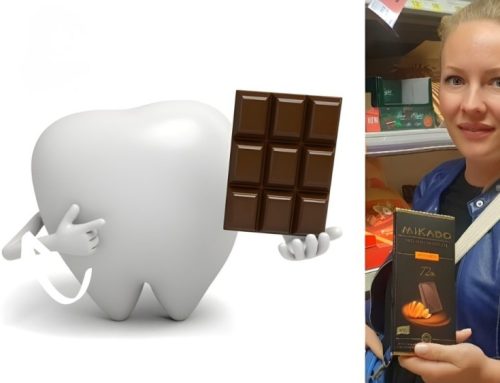A beautiful smile is one of the main components of beauty. The appearance of teeth has an extraordinary effect on confidence, making you look more attractive and younger.
If you don’t feel comfortable smiling due to damaged, spaced, or irregular teeth, it’s no longer an unsolvable problem. Thanks to modern aesthetic dentistry, you can enjoy a beautiful smile. We’re here to help you make a change and enjoy your life.
Dental veneer treatment is an aesthetic dental procedure and an excellent solution through which you can enjoy white and healthy teeth.
Choosing to have dental veneers installed is the first step towards improving the aesthetics of your teeth and achieving that winning smile you’ve longed for. The second step is determining which material to choose.
In this week’s blog from Dental Center 4Smile, you will learn the difference between composite dental veneers and ceramic dental veneers.
TYPES OF DENTAL VENEERS
COMPOSITE DENTAL VENEERS
Composite is the material from which not only veneers are made but also the so-called “white fillings” or composite fillings.
Composite dental veneers are also called direct dental veneers because they are made directly on the tooth (hence their name), covering the entire frontal surface of the tooth and depending on the dentist’s technical ability for proper placement and layering of the composite. Several colors and opacities are available, allowing the reproduction of correct opalescence and reflection/passing of light in each dentin structure.
CERAMIC DENTAL VENEERS
Ceramic dental veneers are one of the most beautiful replacements available in aesthetic dentistry. Ceramic dental veneers at Dental Center 4Smile in Croatia, Europe, are always produced in a dental laboratory after your dentist in Europe, Ivan Antolković, takes an impression of the prepared teeth.
Ceramic dental veneers are the result of the manual work of professional dental technicians who use high-quality glass ceramics and a combination of several different ceramic colors to achieve maximum similarity in color, structure, gloss, and reflection of natural teeth.
DIFFERENCE BETWEEN COMPOSITE DENTAL VENEERS AND CERAMIC DENTAL VENEERS
AESTHETICS
Composite:
- Patients who smoke have a high likelihood of staining on composite. Due to the organic matrix, composite is prone to abrasion from brushing and may eventually lose its initial shine (coating).
- Due to its susceptibility to abrasion, composite is not recommended for patients who suffer from bruxism.
- With darker teeth, there is a possibility that you will not achieve the desired tooth color with composite.
- Composite cannot fill large spaces, so composite veneers are not recommended when you have large gaps between teeth, very short teeth that you want to lengthen, or if large parts of the tooth edge are broken.
Ceramic:
- Ceramic shows a glassy surface that is not subjected to abrasion from daily brushing or food intake, so polishing and color remain untouched over the years.
- Ceramic is a much stronger material than composite, it is bonded to the tooth with special dental cement which, when properly placed, allows for strength and security that the veneer will remain on the tooth for a long time.
- Ceramic comes in several colors that come in colors similar to the colors of real teeth and can be tested before cementing and easily rinsed off, allowing you to choose cement with the best opacity for dark teeth and other colors for other backgrounds.
- With ceramic dental veneers, large diastemas (gaps between teeth) can be covered, the color, shape, length, and structure of the teeth can be changed.
TREATMENT DURATION
Composite:
- Direct composite veneers can be made in one to two visits to the dentist in Europe, Ivan Antolković.
Ceramic:
- Indirect ceramic dental veneers can be made in 3 to 4 visits to the dentist in Croatia, Ivan Antolković.
DURABILITY
Composite:
- Considering the susceptibility to abrasion and staining of composite, the durability of composite dental veneers depends on many factors: oral hygiene, brushing strength, whether the patient is a smoker or not, whether the patient suffers from bruxism. Therefore, under ideal conditions, we can say that composite dental veneers can last from 5 to 7 years, while in real conditions, we can say that they can last 3 to 5 years with regular maintenance.
Ceramic:
- Like composite dental veneers, ceramic dental veneers require regular oral hygiene and check-ups at the dentist, however, due to the quality of the material, they are not prone to color change and abrasion from brushing. Therefore, ceramic dental veneers can last 15 years under ideal conditions, while in real conditions they last 10 to 15 years.
COST OF DENTAL VENEERS
Composite:
- Composite is inherently a cheaper material than ceramic, it does not require work from a dental laboratory, so it is more affordable than ceramic.
Ceramic:
- High-quality ceramic requires manual processing by a dental technician and because of the material and processing cost, it is more expensive than composite.
In conclusion, if you are a patient from abroad, considering saving up on Hollywood smile treatment with results that will last you a long time, your best choice is to get ceramic dental veneers in Europe, Dental Center 4Smile.
Since placing ceramic dental veneers is a painless and simple aesthetic dental procedure, you can use the waiting time of up to 10 days, which is required for getting your final Hollywood smile, for exploring everything that our beautiful country of Croatia has to offer!
Our 4Smile team will not only help you with accommodation, organization and aid your every step in the treatment, but will gladly recommend you what you could check as a tourist!
So, what are you waiting for?
Contact us HERE or send us an email to info@4smile.hr to get on board for the journey to the ideal version of your smile!















